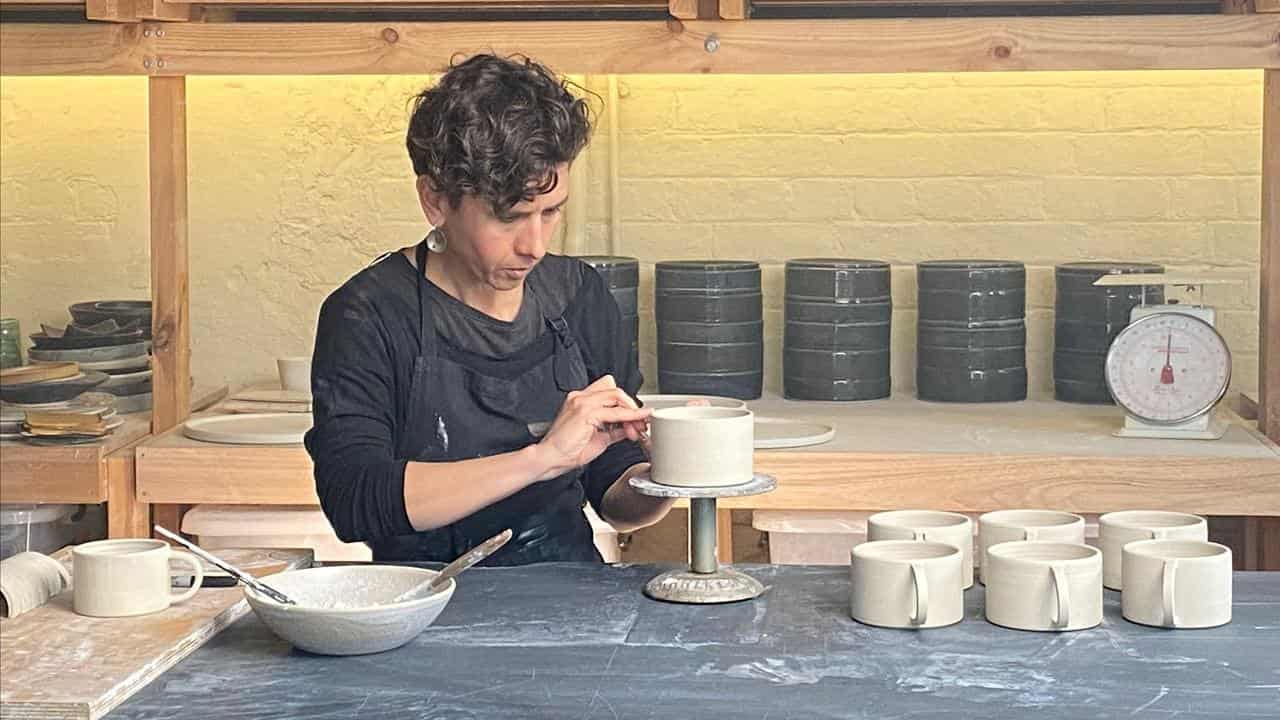
Some of Australia's top chefs espouse a farm-to-table, waste-nothing ethos, but what about the tableware their food is served on?
For the past 15 years, ceramicist Ilona Topolcsanyi has made bespoke plates and bowls for high-end restaurants, working with chefs including Dan Hunter, Joel Bickford and Josh Lopez.
The stereotype of chefs as visionary, intense and tough to work with has not been her experience, and she loves the challenge of making pieces to fit a particular dish perfectly.
For Brisbane's Gallery of Modern Art restaurant, Lopez wanted very large plates to act as canvases for his food-as-art, while at Victorian farm-to-table restaurant Brae, Hunter needed the opposite - small pieces to fit a dozen exquisite courses, and keep a precise amount of sauce in just the right place.
There are some enduring synergies in cooking and pottery, Topolcsanyi said.
Chefs and ceramicists both take their raw ingredients from the earth, adding fire and water.
But she noticed that while restaurants were working to reduce food waste, little could be done with waste from ceramics.
"We use plates for eating off because they are so strong and so durable," she told AAP.
"But that's the same thing that stops them from being recycled and breaking down."
When zero-waste pioneer Joost Bakker asked her to create tableware for his eco-designed Greenhouse in Federation Square, Topolcsanyi hesitated as she felt ceramics didn't live up to his environmental standards.
Her high-end tableware has a failure rate of 20 to 30 per cent and while the soft clay waste can be reused, ceramics can't be recycled after firing.
Cracked plates have to be thrown out and the clay slurry disposed down the sink, Topolcsanyi said.
"I laboured under the idea that because I made (the tableware) from the earth, what I did was good for the earth, and that's not necessarily the case."
That dilemma became the inspiration for an exhibition of sculptures called Gather, at Melbourne's Abbotsford Convent, that's made entirely from ceramics waste.
Topolcsanyi began firing the leftover clay found in settling tanks, and put an online call out for old pyrometric cones, which are used in kilns to measure heat.
She received thousands of them from potters around Australia, and refired them into two-dimensional sculptures.
Cracked plates and bowls were also stacked into sculptural forms and refired for display in the convent's gardens.
In one respect, Topolcsanyi's studio is ahead of the game: the convent building has a large solar system that produces enough electricity to power a kiln.
It's a demonstration of sustainable ceramics, she says, and a glimpse of a no-waste future.
* The 'Gather' exhibition and workshop series runs August 31 to September 17.









